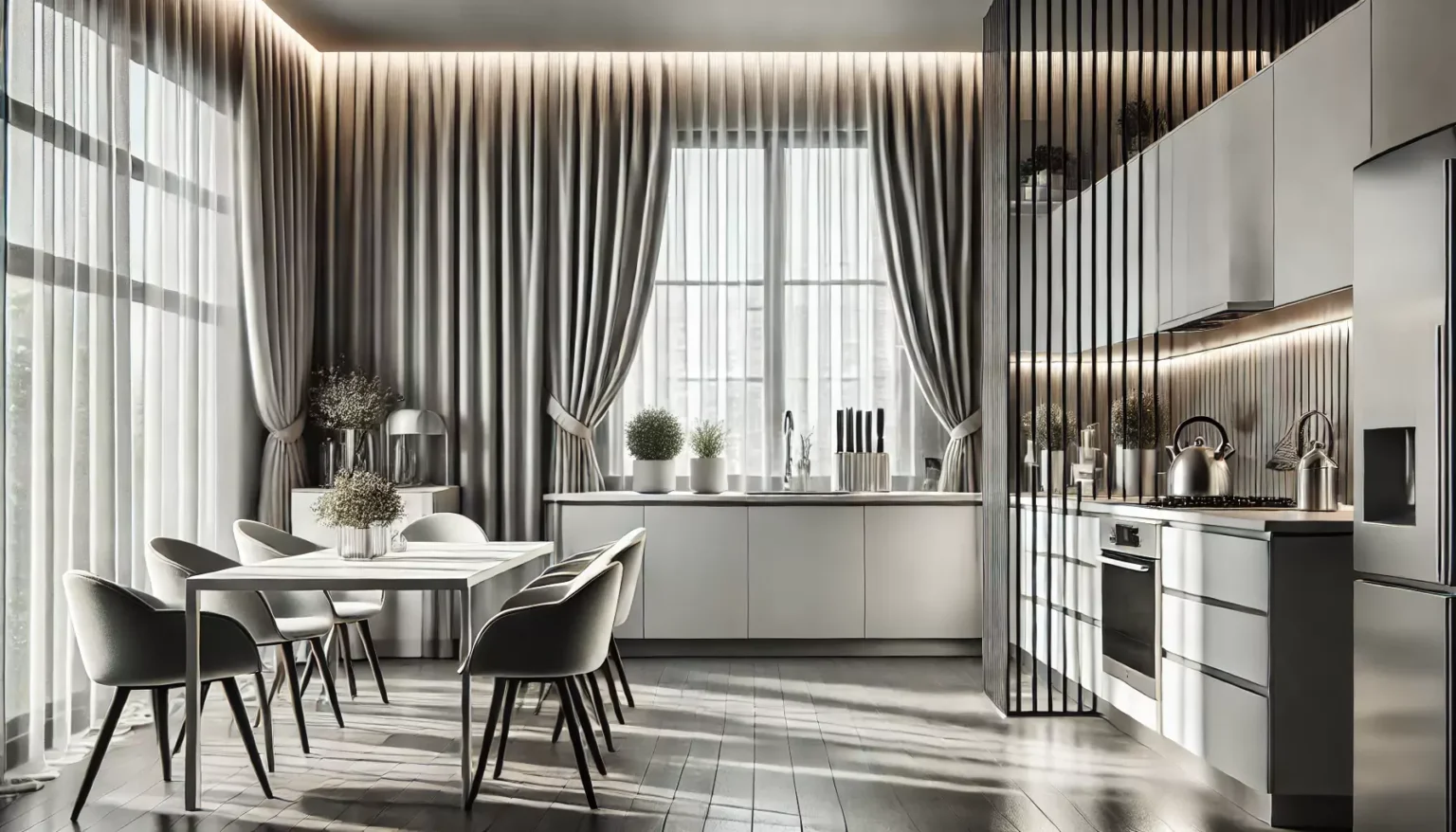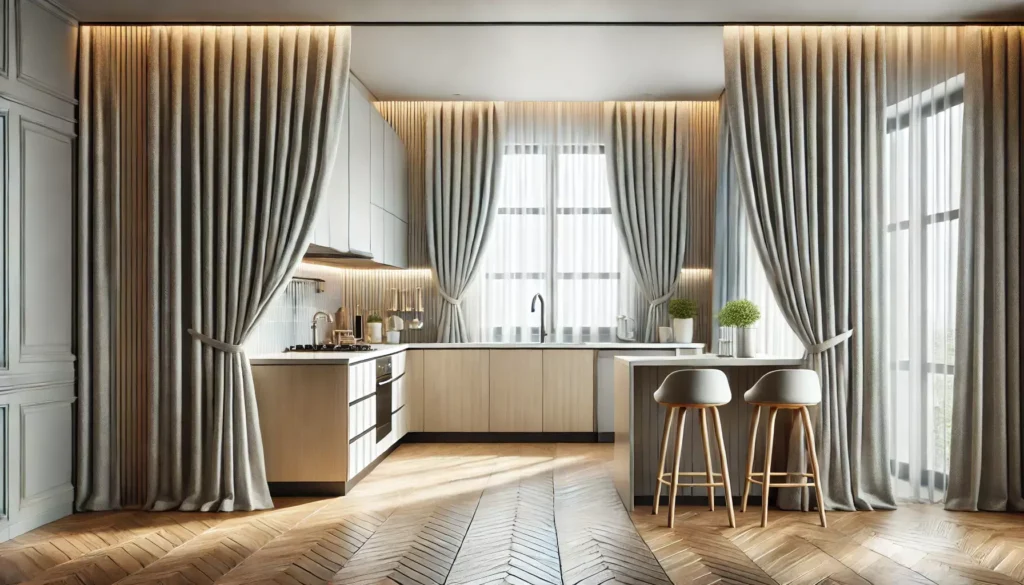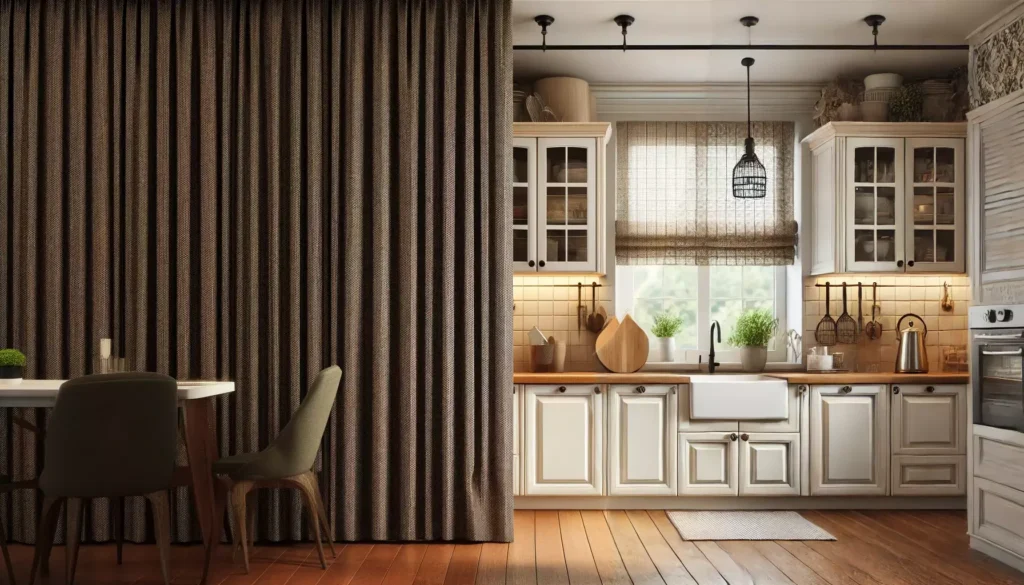Kitchen Curtains
Functionality and Style for Your Culinary Space
Types of Kitchen Curtains: Finding the Perfect Style for Your Home
Choosing the right kitchen curtains can make a big difference in the functionality and style of this important space in the home. Kitchen curtains not only need to be practical but should also complement the existing decor and suit day-to-day needs. With a wide variety of styles available, finding the perfect kitchen curtains may seem overwhelming, but with the right information, the process can be simpler and more rewarding. Here, we explore some of the most common types of kitchen curtains and how to select the ideal style for your home.
Sheer curtains are a classic and popular choice for the kitchen. These lightweight, transparent curtains allow natural light to flood the space while maintaining a basic level of privacy. They’re ideal for kitchens that need plenty of natural light, as they don’t block daylight. Kitchen sheer curtains are typically made from lightweight materials such as voile, linen, or cotton, and are available in a variety of colors and patterns.
This type of curtain is perfect for rustic, vintage, or country-inspired kitchens, where a cozy and bright atmosphere is desired. Additionally, sheers can be paired with heavier curtains for greater control over light and privacy when needed.
Café curtains, also known as half-height curtains, are a charming option for kitchens. This type of kitchen curtain covers only the lower half of the window, leaving the top exposed to allow natural light to enter. Café curtains are ideal for small windows or windows facing patios or gardens, as they provide privacy on the bottom while letting light filter through from above.
Café kitchen curtains come in a wide variety of styles, from simple and minimalist options to more elaborate designs with embroidery and decorative details. They’re perfect for rustic or traditional kitchens and are often used in spaces with a more casual and homely feel.

Blinds and shades are a modern and functional option for kitchen curtains. These curtain systems are perfect for those seeking precise control over light and privacy in the kitchen. Blinds can be made from materials like aluminum, wood, or PVC, allowing you to adjust the amount of light entering the kitchen by simply tilting the slats. On the other hand, shades roll up and down, offering a practical option for small spaces or for those who prefer a more contemporary style.
Blinds and shades are especially useful in modern or minimalist kitchens, where a clean and functional aesthetic is desired. Additionally, some shades are available in opaque or translucent versions, allowing you to adapt the curtain to suit the needs of each time of day.
For those who prefer a more decorative and romantic touch in their kitchen, ruffled curtains are a charming option. This type of kitchen curtain adds an extra decorative element with ruffles, pleats, or lace that often adorn the top or bottom of the curtains. They come in a variety of colors and patterns, allowing you to customize the style to match the existing decor.
Ruffled curtains are perfect for kitchens with a shabby chic, vintage, or romantic style, where a touch of charm and softness is desired. They are especially popular in country kitchens or in those decorated with a more feminine and detailed approach.
How to Choose Kitchen Curtains that Combine Functionality and Aesthetics?
The first aspect to consider when choosing kitchen curtains is their functionality. This space is exposed to high levels of humidity, heat, and potential stains, so the curtains should be practical and durable. When selecting kitchen curtains, look for materials that are easy to clean and resistant to wear. Cotton, polyester, and blends of both are excellent options due to their durability and ease of maintenance.
If your kitchen receives a lot of direct sunlight, consider kitchen curtains with sun-blocking or UV protection properties. This will not only protect furniture and appliances from fading but also help maintain a comfortable temperature in the kitchen during the hottest days. For those seeking privacy without sacrificing natural light, translucent or semi-opaque curtains can be the ideal solution.

Once you’ve considered functionality, it’s time to think about aesthetics. Kitchen curtains are an opportunity to add personality and style to your space. Choose curtains that complement the color scheme and overall style of the kitchen. If your kitchen has a modern, minimalist design, opt for kitchen curtains with clean lines and neutral colors that harmonize with the existing decor. Conversely, if your kitchen has a more traditional or rustic style, curtains with floral or checkered patterns can add a touch of cozy charm.
In addition to color and pattern, select kitchen curtains that fit the scale and proportion of the windows. Long, floor-length curtains may not be practical in the kitchen, as they can easily get dirty. Instead, opt for mid-length curtains or café curtains that cover only half of the window to maintain both functionality and style.
Another important factor when choosing kitchen curtains is finding the right balance between natural light and privacy. If your kitchen has windows facing outdoors or a public area, you may want curtains that offer privacy without completely blocking the light. Sheer curtains and translucent fabrics are excellent options, allowing natural light in while preserving privacy. On the other hand, if you prefer greater light control, blinds or roller shades may provide a more flexible solution.
For small kitchens, light and bright-colored curtains can help create a sense of spaciousness and brightness. In larger kitchens, you can experiment with darker or patterned kitchen curtains to add depth and character to the space.
The kitchen is one of the busiest areas in the home, and curtains are exposed to food splashes, steam, and grease. Therefore, it’s important that kitchen curtains are easy to maintain. Opt for materials that can be machine-washed or wiped with a damp cloth to ensure they stay in good condition with minimal effort. Some curtains also come with special stain-repellent treatments, which can be a big advantage in such an active setting as the kitchen.
Current Trends in Kitchen Curtains: Designs That Make a Difference
One of the strongest trends in kitchen curtains is minimalism. Curtains with simple lines and neutral colors, such as white, gray, beige, and earthy tones, are gaining popularity. These curtains bring a sense of sophistication and cleanliness to the space, making them ideal for modern, minimalist kitchens. Neutral tones allow natural light to flow freely, creating a bright and fresh atmosphere. Additionally, minimalist kitchen curtains are often made from lightweight, easy-to-maintain materials, making them a practical choice for high-traffic kitchens.
The minimalist approach extends beyond color to the structure of the curtains. Simple designs without excessive adornments or elaborate pleats are key to this trend, allowing the curtains to blend harmoniously with the rest of the decor without overwhelming the space.
For those seeking a bolder touch in their kitchen, curtains with geometric and modern prints are on the rise. Abstract patterns, lines, triangles, and geometric shapes bring a contemporary and dynamic feel to the kitchen, transforming it into a more creative and vibrant area. This type of kitchen curtain is perfect for those who want to add personality without sacrificing functionality.
Geometric prints are available in a wide range of colors, from subtle shades to vibrant hues. This trend is ideal for modern or eclectic kitchens, where an innovative design that stands out is desired.
Another growing trend is the use of kitchen curtains with natural textures. Materials such as linen, cotton, and natural fiber blends are becoming popular for their organic look and their ability to add warmth and authenticity to the space. These curtains are not only aesthetically appealing but also sustainable, making them an increasingly sought-after option for those who value eco-friendly design.

Kitchen curtains with natural textures are versatile and work well with various decorative styles, from rustic to bohemian and modern. Additionally, the texture of the material adds a tactile element that can make the kitchen feel cozier and more inviting.
Technology is also beginning to influence kitchen curtain design. Smart curtains, which can be controlled via mobile apps or voice assistants, are entering the market. This trend meets the growing demand for smart, automated homes where every element can be controlled remotely. These kitchen curtains offer convenience and efficiency, allowing you to adjust light and privacy with just a click.
Moreover, many of these technologically advanced kitchen curtains are designed with high-performance materials that not only block light and improve energy efficiency but also resist moisture and stains, making them perfect for the kitchen environment.
Maintaining Kitchen Curtains: Tips to Keep Them Spotless
Regular cleaning is essential to keep kitchen curtains in optimal condition. Due to constant exposure to steam and food splashes, dust and dirt can accumulate quickly on curtains. To prevent dirt from sticking permanently, it’s recommended to clean kitchen curtains regularly.
A good habit is to shake the curtains at least once a week to remove surface dust. You can also use a duster or a vacuum cleaner with a soft brush attachment to remove dust particles. This simple step will help keep the curtains from looking dull and maintain a clean environment.
The material of the kitchen curtains will determine the most suitable washing method. Most kitchen curtains are made of cotton, polyester, or blends of both, allowing them to be machine-washed. However, it’s important to always follow the care instructions provided by the manufacturer.

For machine-washable curtains, use a gentle cycle with cold water to avoid material wear. A mild detergent is ideal to maintain the curtains’ colors and texture. It’s preferable to air dry them, either outdoors or indoors, rather than using a dryer, as intense heat can shrink or deform the curtains.
If your kitchen curtains are made from more delicate materials or have decorative details like lace or embroidery, consider taking them to a dry cleaner that specializes in delicate fabrics. This will ensure they receive the proper treatment without the risk of damage.
Stains are inevitable in the kitchen, but addressing them immediately can make a big difference in maintaining kitchen curtains. If a stain occurs, act quickly to prevent it from setting into the fabric. Remove any excess food or liquid with a clean, dry cloth, then apply a mild solution of warm water and detergent to clean the stain. Avoid rubbing too hard, as this may damage the material.
For tougher stains like grease or sauces, you can use a fabric-specific stain remover. Be sure to test the product on a small, inconspicuous area before applying it to the entire curtain to avoid discoloration or damage.
Prolonged exposure to direct sunlight can cause kitchen curtain colors to fade over time. To protect them, consider using additional linings or blinds to filter intense sunlight when natural lighting isn’t needed. This will help preserve color intensity and prevent premature wear of the material.
Additionally, due to high humidity in the kitchen, it’s important to ensure that the curtains have good ventilation to prevent mold or unpleasant odors. If your kitchen curtains are exposed to a lot of moisture, make sure to open windows or use fans to promote air circulation.
Thank you for joining us in exploring decorating ideas for kitchens and dining rooms. For more inspiration and practical tips, we invite you to explore our page at 1Acurtains.com, where you’ll find the best curtain options for every space in your home.
